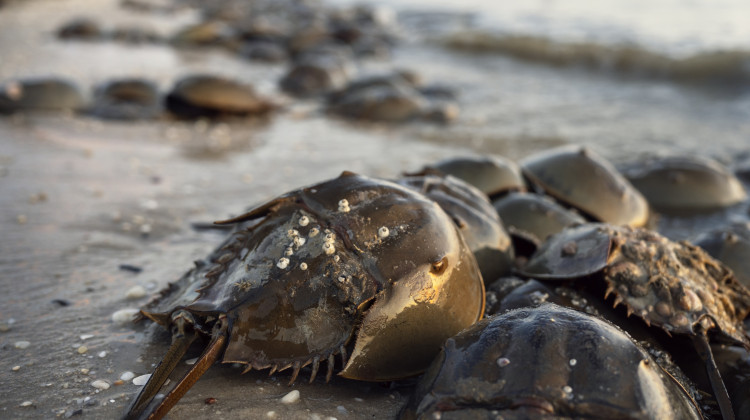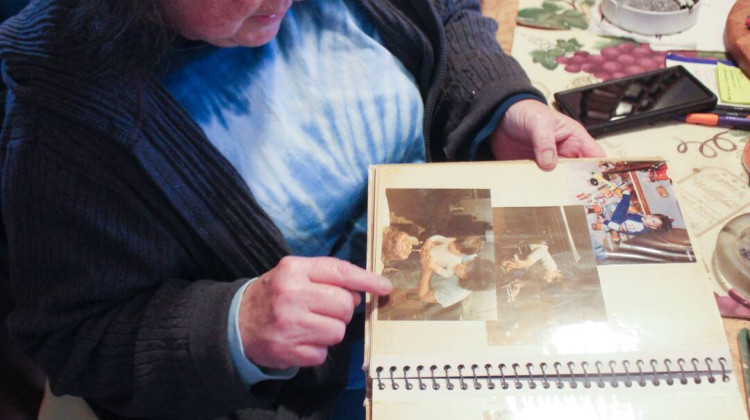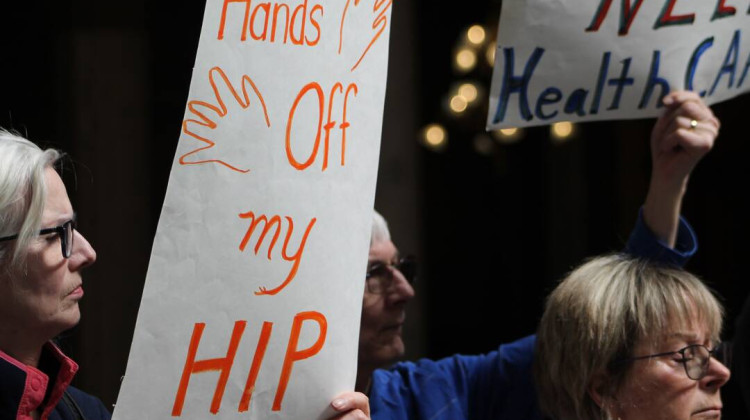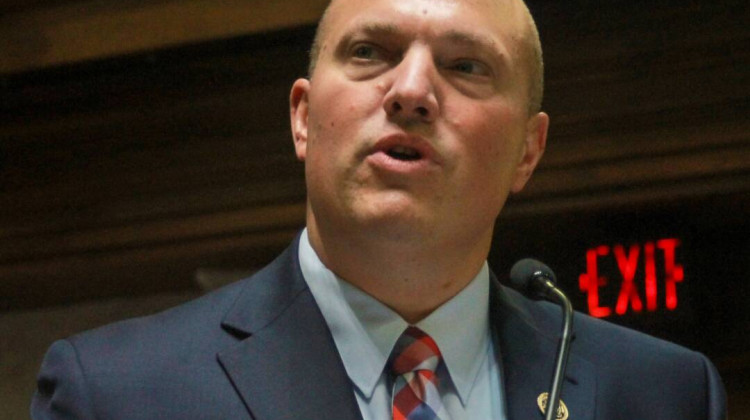
Horseshoe crab blood is used in medical testing. The Indianapolis Zoo and Eli Lilly are among those advocating for a shift to alternatives.
Todd Rosenberg Photography for Eli LillyHorseshoe crab blood has been used in medical testing for at least the last five decades. But environmental groups worry that bleeding the animals, which can kill some of them, can negatively impact the environment.
The Indianapolis Zoo and Indiana-based pharmaceutical company Eli Lilly are among those advocating for the use of synthetic alternatives.
Horseshoe crab blood clots when it comes into contact with bacterial toxins, making it useful for testing the safety of vaccines and medical equipment before they make it to patients.
But the practice involves taking hundreds of thousands of horseshoe crabs and bleeding them, and not all of them survive. According to estimates by the Atlantic States Marine Fisheries Commission, 15% of the crabs die due to the bleeding process
Sergio Henriques, the invertebrate conservation coordinator with the Indianapolis Zoo, said the practice is impacting entire ecosystems.
“There's evidence to show that shore birds decline in the same amount as a horseshoe,” Henriques said. “So, the two are connected. We've been trying to work with those that promote these alternative sustainability options.”
Red knots, a species of bird that feeds on horseshoe crabs, have seen their populations decline by over 90% over the past 40 years.
Henriques said synthetic alternatives to horseshoe crab blood have been available for decades like a genetically engineered protein called Recombinant Factor C (rFC), which mimics the clotting factor in horseshoe crab blood. But Henriques said the industry has been slow to adopt these alternatives.
“It seems kind of unnecessary when there's a sustainable option that's synthetic available,” he said. “Why would you do that to the animals if you find another solution?”
Eli Lilly has been moving toward a synthetic alternative since 2016. Now, the company says it uses the synthetic material in about 80% of their testing.
Jay Bolden is a senior director at Eli Lilly who has helped support the switch. He said some of the barriers to a full switch from horseshoe crab blood are related to which countries have approved the use of synthetic alternatives in testing.
“As a big multinational, to go to 130 different countries and say, ‘We want to change this,’ and then we have to manage if it's approved in this country but not approved in this country. That becomes difficult from a supply chain perspective,” he said.
During the early stages as Eli Lilly weighed adoption of synthetic alternatives, Bolden said they were encouraged when the U.S. Food and Drug Administration said it was open to accepting the synthetic material and when a second supplier began producing it.
But other companies have been slower to adopt synthetic alternatives, with some pointing to guidance from the United States Pharmacopeia, which sets standards for medical safety testing.
That changed last year when the USP released new guidance in 2024, making it easier to adopt the synthetic alternatives. But companies are not required to adopt the new method.
“Because these barriers have been falling, you do see a lot more adoption, really, within, probably about the last two years,” Bolden said, adding that he’s hopeful the industry as a whole will continue to move in a more environmentally friendly direction.
Contact Health Reporter Benjamin Thorp at bthorp@wfyi.org.
Side Effects Public Media is a health reporting collaboration based at WFYI in Indianapolis. We partner with NPR stations across the Midwest and surrounding areas — including KBIA and KCUR in Missouri, Iowa Public Radio, Ideastream in Ohio and WFPL in Kentucky.
 DONATE
DONATE






 Support WFYI. We can't do it without you.
Support WFYI. We can't do it without you.